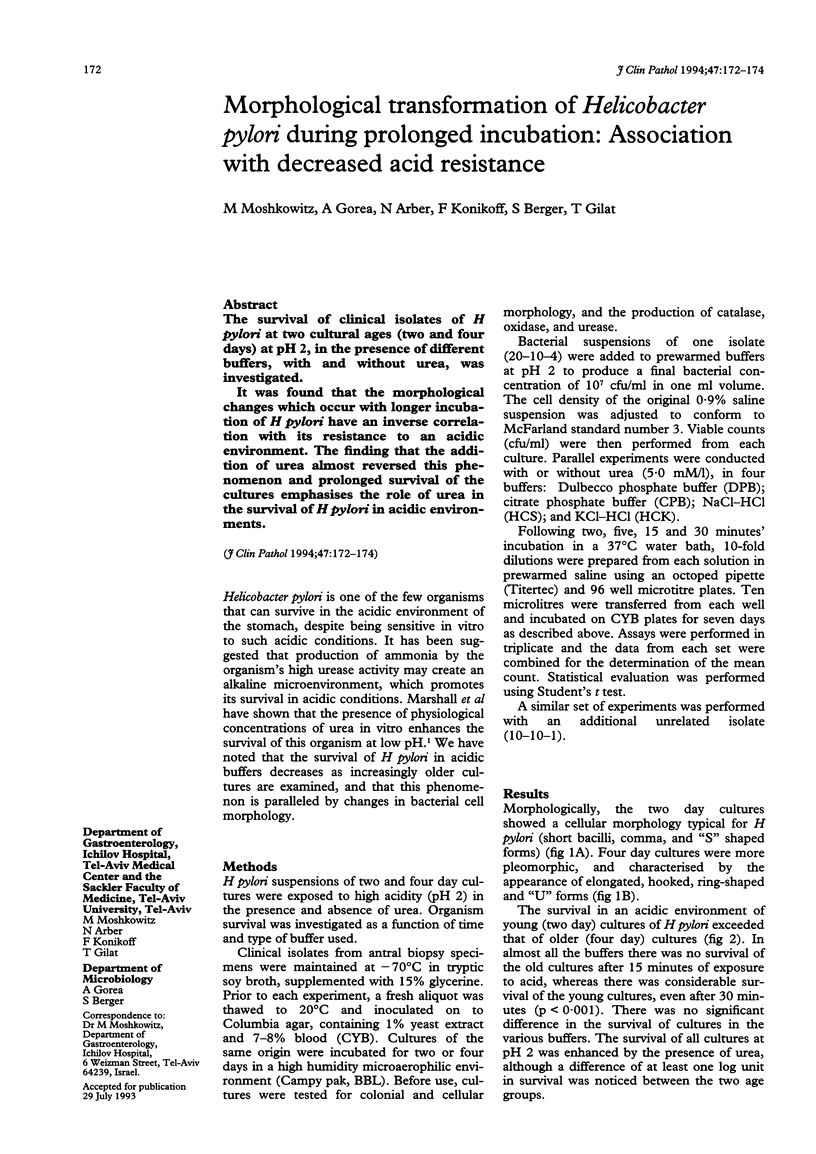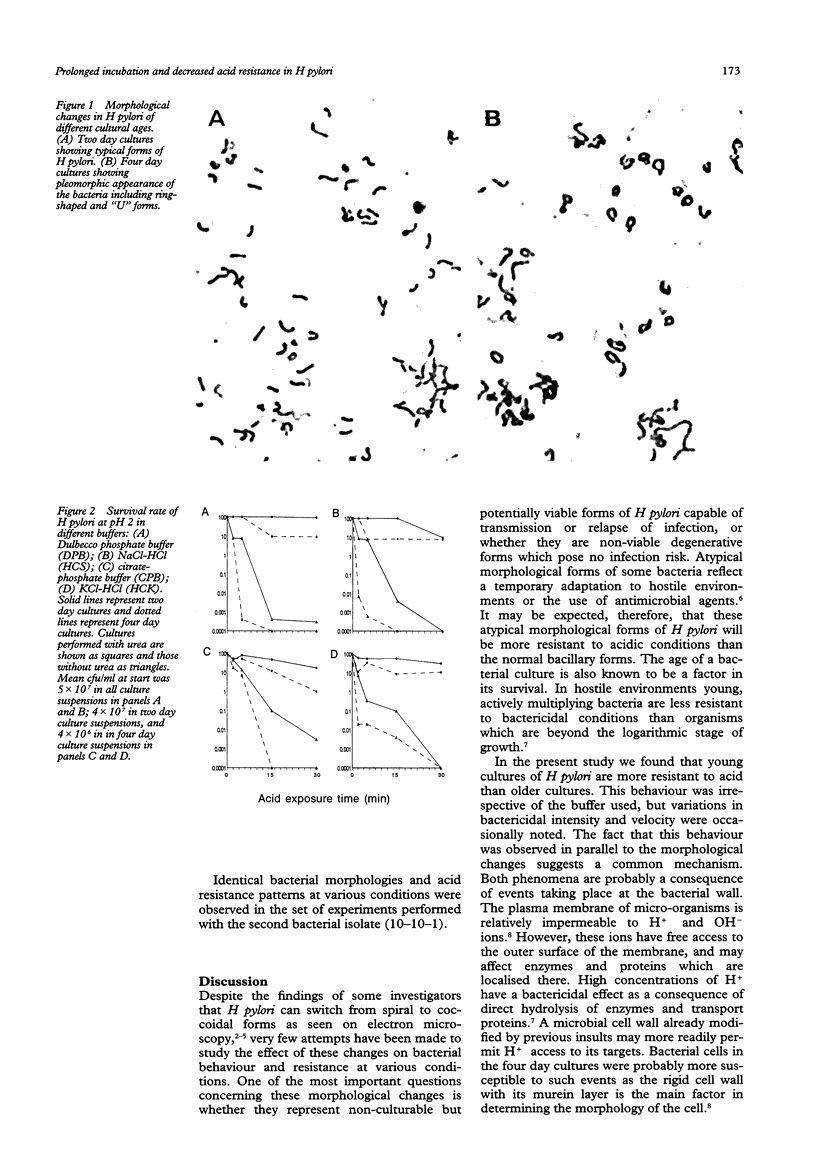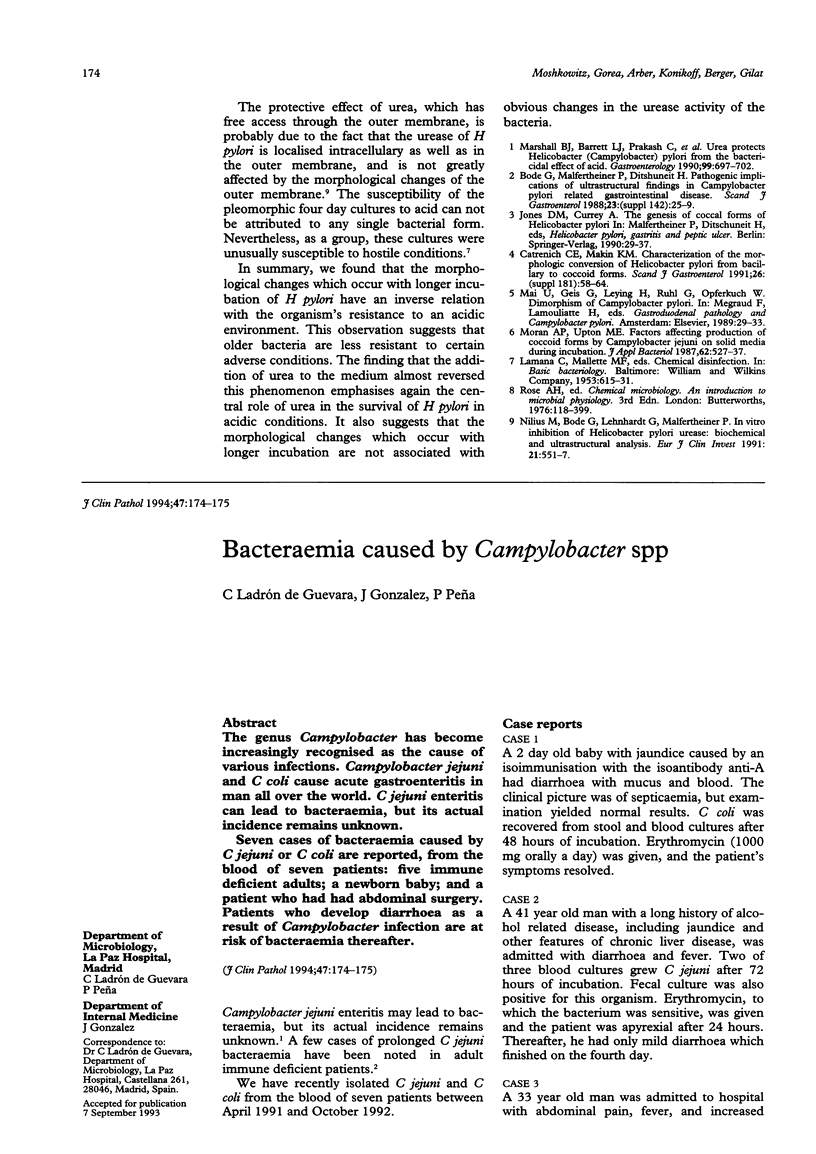Abstract
The survival of clinical isolates of H pylori at two cultural ages (two and four days) at pH 2, in the presence of different buffers, with and without urea, was investigated. It was found that the morphological changes which occur with longer incubation of H pylori have an inverse correlation with its resistance to an acidic environment. The finding that the addition of urea almost reversed this phenomenon and prolonged survival of the cultures emphasises the role of urea in the survival of H pylori in acidic environments.
Full text
PDF


Images in this article
Selected References
These references are in PubMed. This may not be the complete list of references from this article.
- Catrenich C. E., Makin K. M. Characterization of the morphologic conversion of Helicobacter pylori from bacillary to coccoid forms. Scand J Gastroenterol Suppl. 1991;181:58–64. [PubMed] [Google Scholar]
- Marshall B. J., Barrett L. J., Prakash C., McCallum R. W., Guerrant R. L. Urea protects Helicobacter (Campylobacter) pylori from the bactericidal effect of acid. Gastroenterology. 1990 Sep;99(3):697–702. doi: 10.1016/0016-5085(90)90957-3. [DOI] [PubMed] [Google Scholar]
- Moran A. P., Upton M. E. Factors affecting production of coccoid forms by Campylobacter jejuni on solid media during incubation. J Appl Bacteriol. 1987 Jun;62(6):527–537. doi: 10.1111/j.1365-2672.1987.tb02685.x. [DOI] [PubMed] [Google Scholar]
- Nilius M., Bode G., Lehnhardt G., Malfertheiner P. In vitro inhibition of Helicobacter pylori urease: biochemical and ultrastructural analysis. Eur J Clin Invest. 1991 Oct;21(5):551–557. doi: 10.1111/j.1365-2362.1991.tb01409.x. [DOI] [PubMed] [Google Scholar]



